The Author of the Textbook Writes That the Marketing of Art Created by Pintupi of Western Australia
In this article David Wroth takes you on a walkthrough of the Pintupi Artists exhibition.
In Gallery 2 we have the exhibitionPintupi Artists of the Western Desert. It'south said that the human being brain is congenital for recognising patterns. These Pintupi artists accept an extraordinary talent for creating structured patterns and designs that correspond different aspects of their civilization. The works are representing the desert country, representing Tingari or Dreaming sites, representing formalism sites and places of significance.
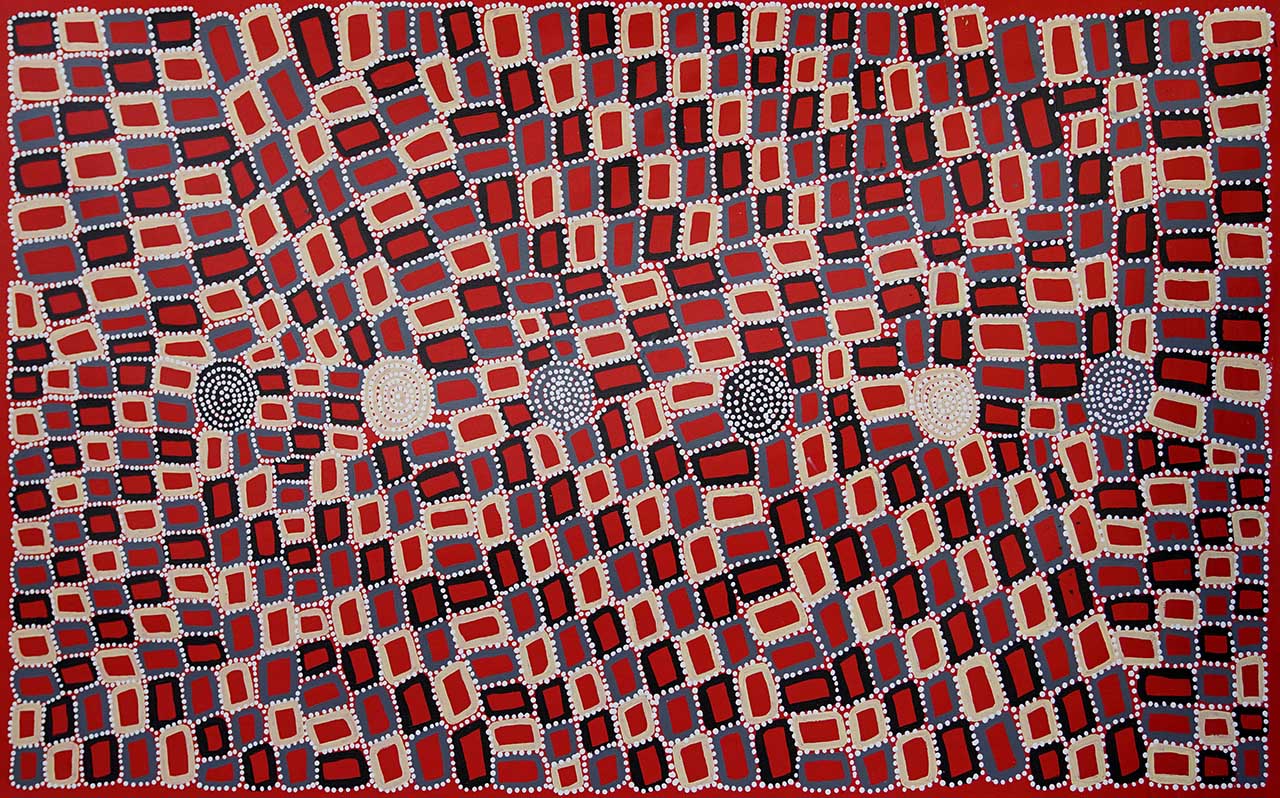
Tingari by Walala Tjapaltjarri – 015867
We're standing in front of a painting by Walala Tjapaltjarri… all his works are titled Tingari, referring to the men'south ceremonial and Creation narrative that forms the ground of Police force for Pintupi people. The whole painting is composed of small rectangles broken up with rows of dots and primal concentric forms representing waterholes. The painting is typical for Pintupi style in its utilize of pattern and repetition to build up structures that go recognisable every bit features of Pintupi art. The patterns are highly significant, coming out of the symbolic language used to transfer noesis about Pintupi culture and Constabulary. Each creative person tends to raise and develop their own signature utilise of designs that represent their country and therefore these compositions of designs become associated with the style of that particular artist.
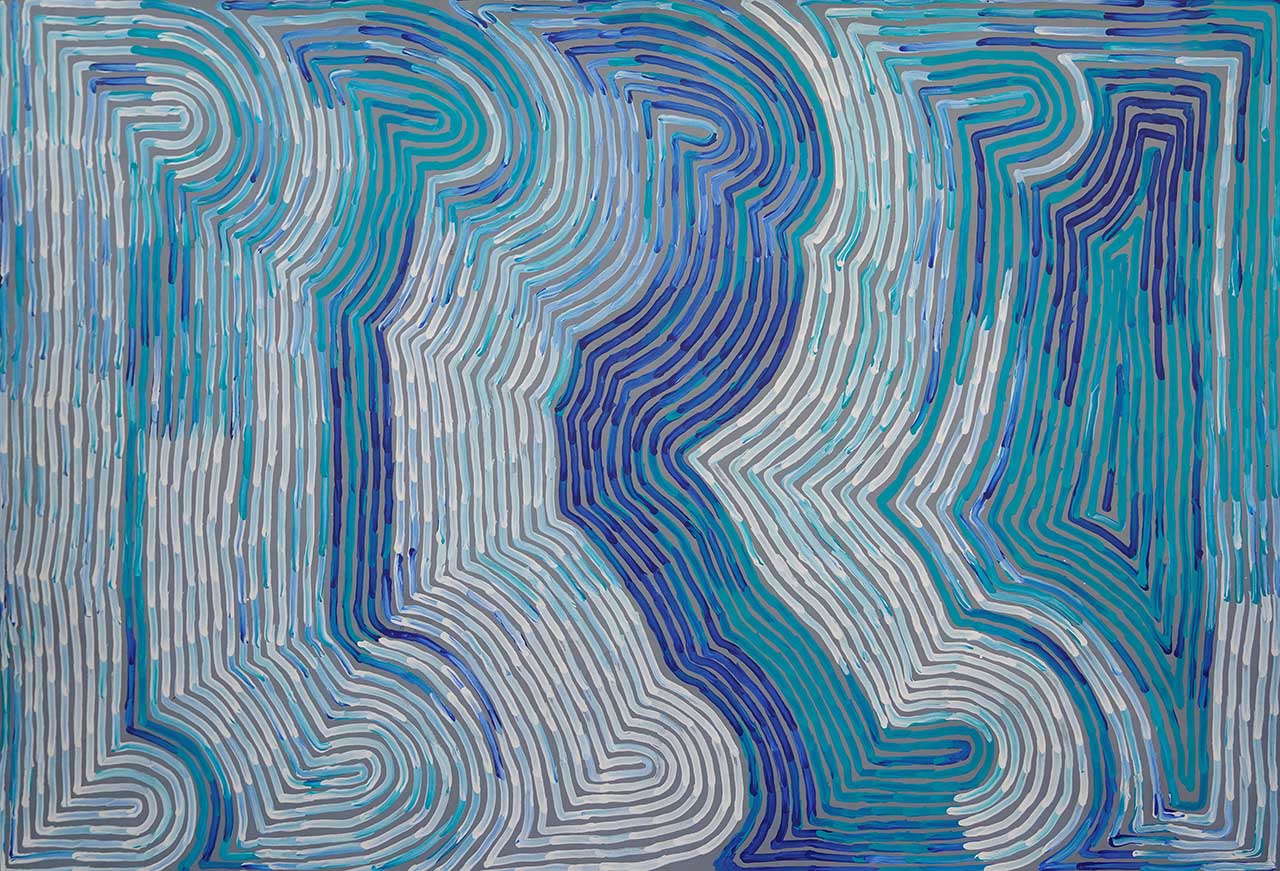
Water Dreaming by Ronnie Tjampitjinpa | Jap 015913
Ronnie Tjampitjinpa has created this striking and linear painting representing Water Dreaming. There are repetitive lines of colour where he has dipped the brushes in a range of colours that merge from deep blue through aqua green to pale blues and whites. The whole structure blends from one colour to the next making a maze of the lines that seem continuous. The issue of this repetitive serial of maze-like forms painted in bluish tones indicates the power and strength of the Water Dreaming story for desert people. Ronnie's designs are highly refined, very minimal, reduced downward to rows of lines that are highly irregular and asymmetrical, mayhap following in the mural of his state. This artwork is painted on a silverish grey background and then it hums with the flow and feeling of a H2o Dreaming story.
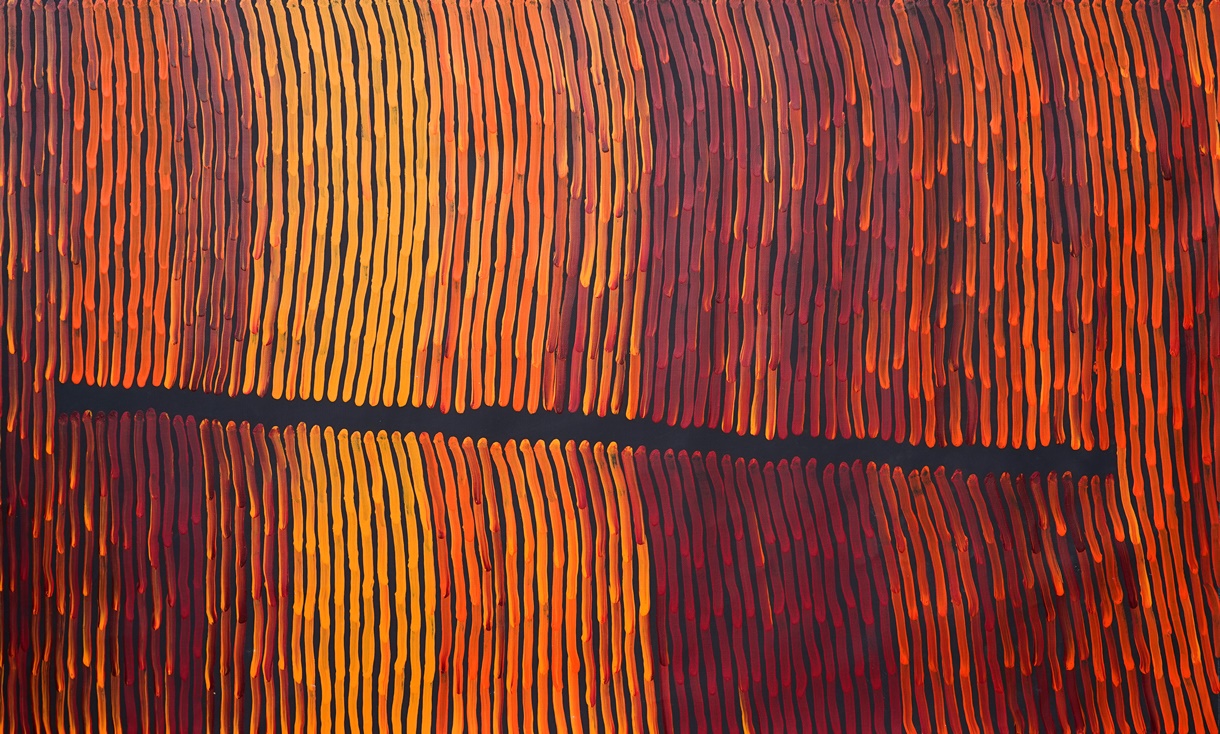
Tingari – Burn Dreaming by Ronnie Tjampitjinpa | Jap 015464
The other aspect of Ronnie Tjampitjinpa'southward structures is the Fire Dreaming story. Again we meet parallel lines blending through the colour range of reds, oranges, golds and yellows. There is suspension-line through the center. Perhaps that is representing the control of the fire on state. There's always this break when no lines tin go through and there's just the black of the background colour of the canvas.
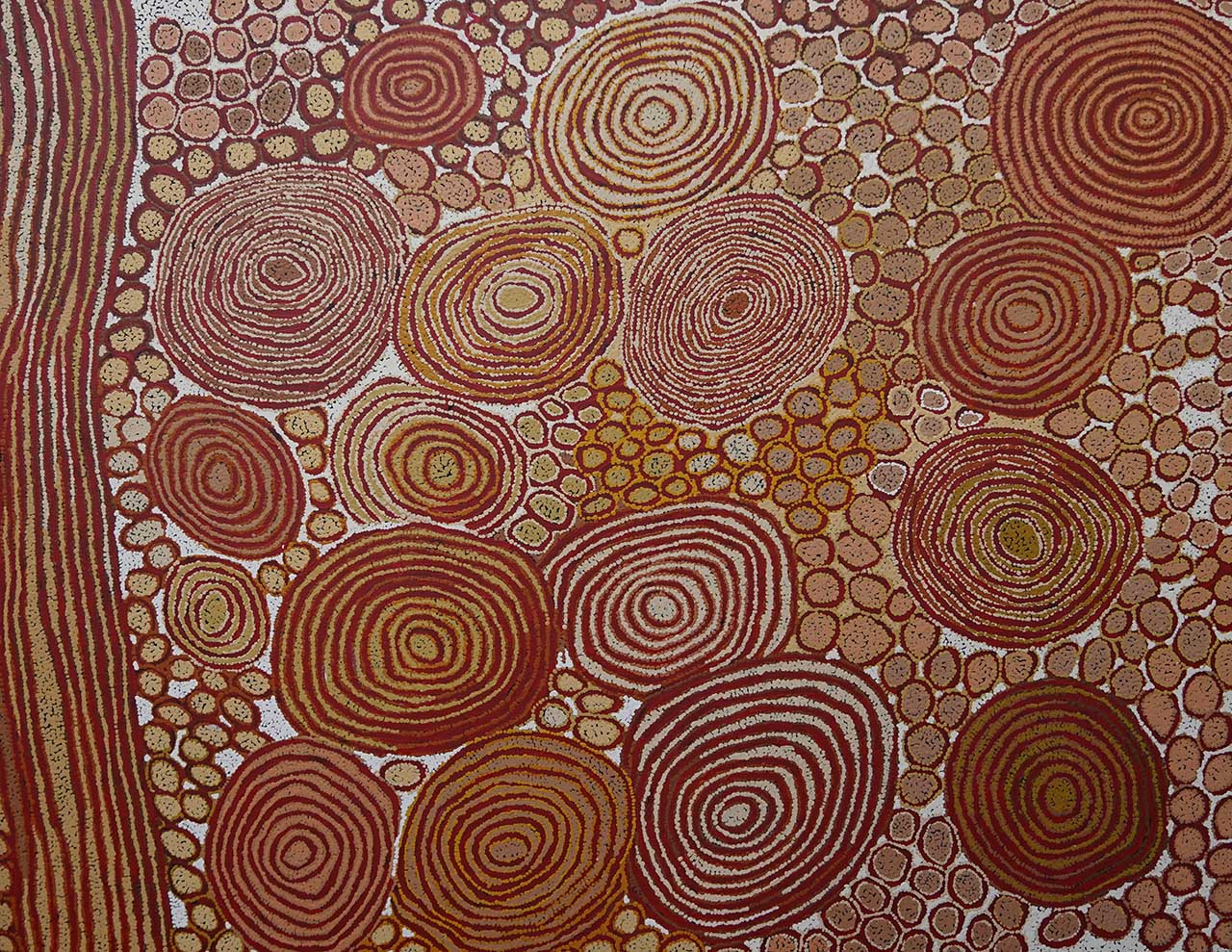
Walangkura Napanangka | Womens Ceremony | Jap 000994
This is a unlike kind of pattern-making or design representation from Walangakura Napanangka (1946-2014) who is 1 of the swell women artists of Pintupi culture. Her designs are focused on women'due south formalism sites constitute in rocky country, so the locations are highly significant in women's Tingari Dreaming mythology. To emphasise that the locations are in very rocky country we get these large concentric circles dominating the canvas, and we get lots of small round rocks and rocky outcrops completely filling the spaces in between. So the painting becomes highly agile, very irregular in its rhythm. But the whole composition being based on these circular motifs, the whole thing pulls together equally an prototype of ceremonial country amongst rocky outcrops, and it is once once more a signature style that identifies an creative person from Pintupi civilisation.
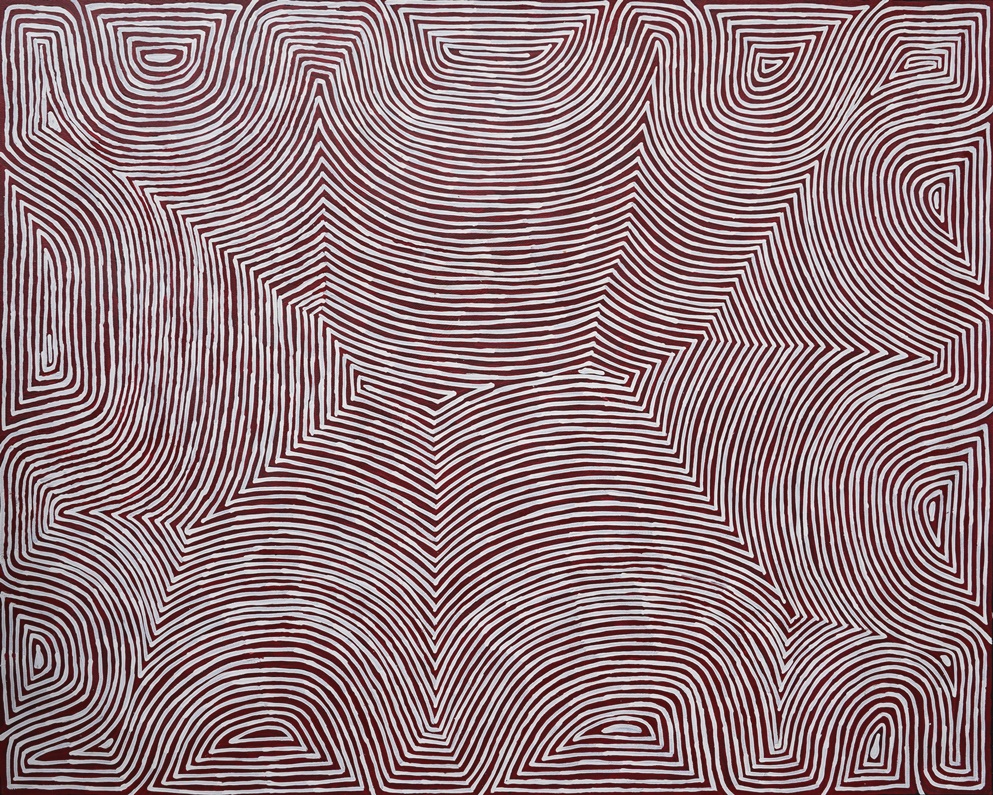
George Hairbrush Tjungurrayi | Tingari | Jap 015458
George Hairbrush Tjungurrayi paints Tingari designs that are very optical, which is another aspect of Pintupi art. The lines meander and fold and suspension across the canvas. They're painted in contrasting colours, in this instance it's red and white alternate colour. The designs are hypnotic. They are very optically challenging. They pulse and move in forepart of your eyes if you stand and expect at information technology for some time. This is another aspect of Pintupi pattern making where the artists use the echo design structures right across the canvas. I think it expresses the enormity of the country of that vast desert terrain, and maybe also the hypnotic quality of the landscape.
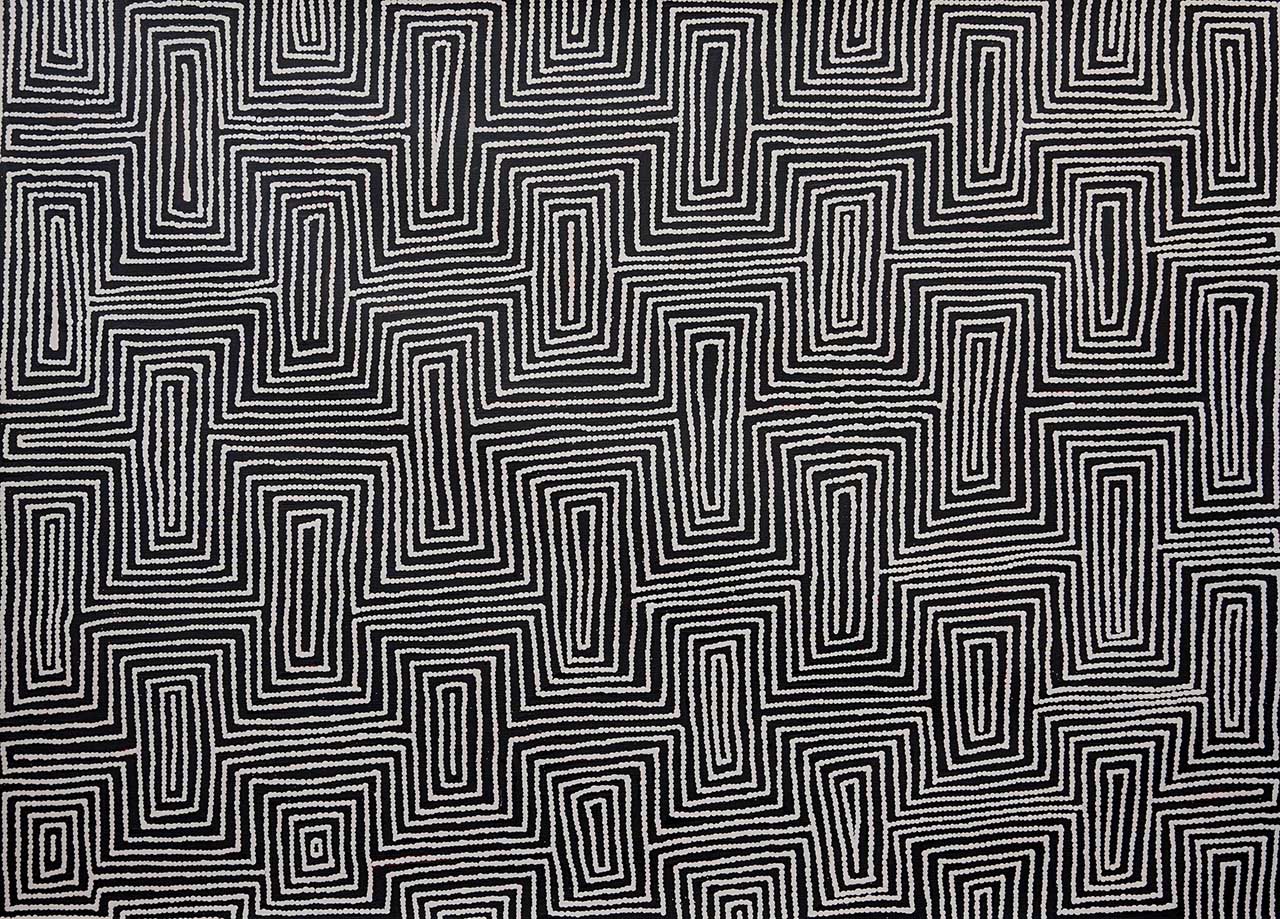
Jake Tjapaltjarri | Fathers Country | Jap 015717
Jake Tjapaltjarri is the son of George Hairbrush. His painting called Father's Country uses a form of keyhole imagery, these interlocking shapes almost like vertebrae, parallel rows of designs that mesh together across the canvas. This creates a very optical effect then you can't really stand and look at it continuously for whatever length of time. At that place's a repeated design made up of rows of dots that form the interlocking shapes. The patterns pulse with motility and free energy, but as the landscape does if you were flying over it. It is an expression of the expansive and important aspect of life and the land in one blueprint. The man brain recognises that it is a design about the Creation process and the construction of the country more than specifically nigh any terrain or mural you might see on a map.
It was expressed to me a long time agone by an elder who was a stockman, he spoke of the patterns equally a brand. He was using brand in the sense you would brand cattle to show what station they belong to. In that sense he was proverb these patterns are brands belonging to the owners. And so these traditional owners could exist recognised for their domicile country but by the types of patterns on the ornaments and artefacts that they carried with them. This is almost like our modern sense of the make, which travels across fourth dimension and territory. And in this instance people recognise these paintings and the imagery equally an expression of Pintupi culture. This is a small and quite isolated civilization, only the strength of the branding that they create and have expressed in their painting is truly significant.
Source: https://japingkaaboriginalart.com/articles/the-pintupi-artists-of-the-western-desert/
0 Response to "The Author of the Textbook Writes That the Marketing of Art Created by Pintupi of Western Australia"
Post a Comment